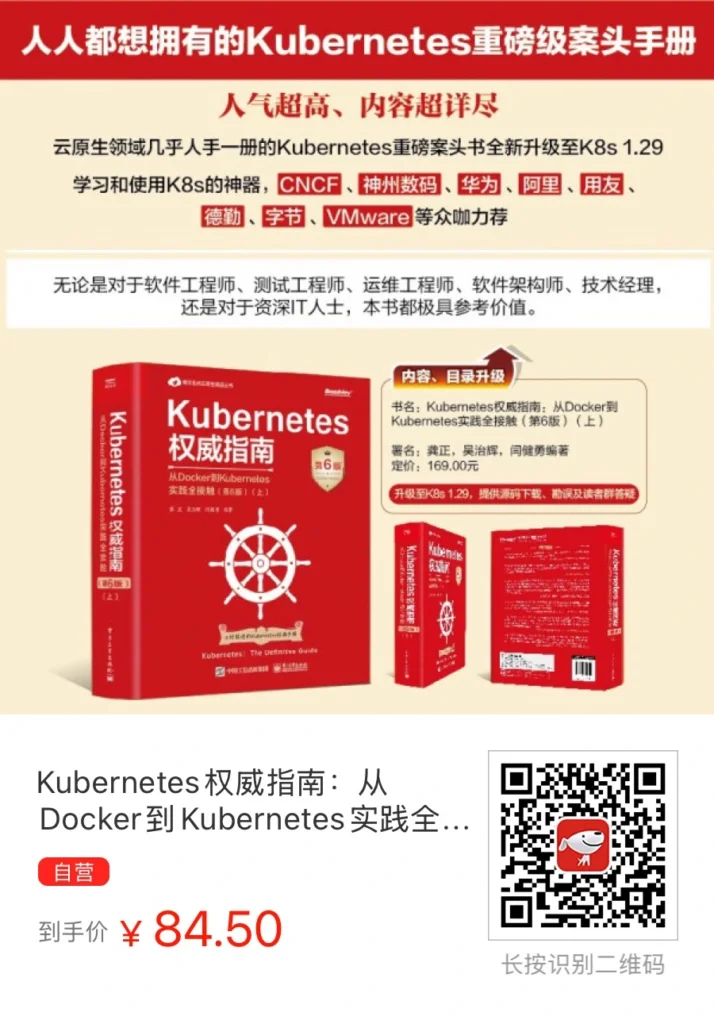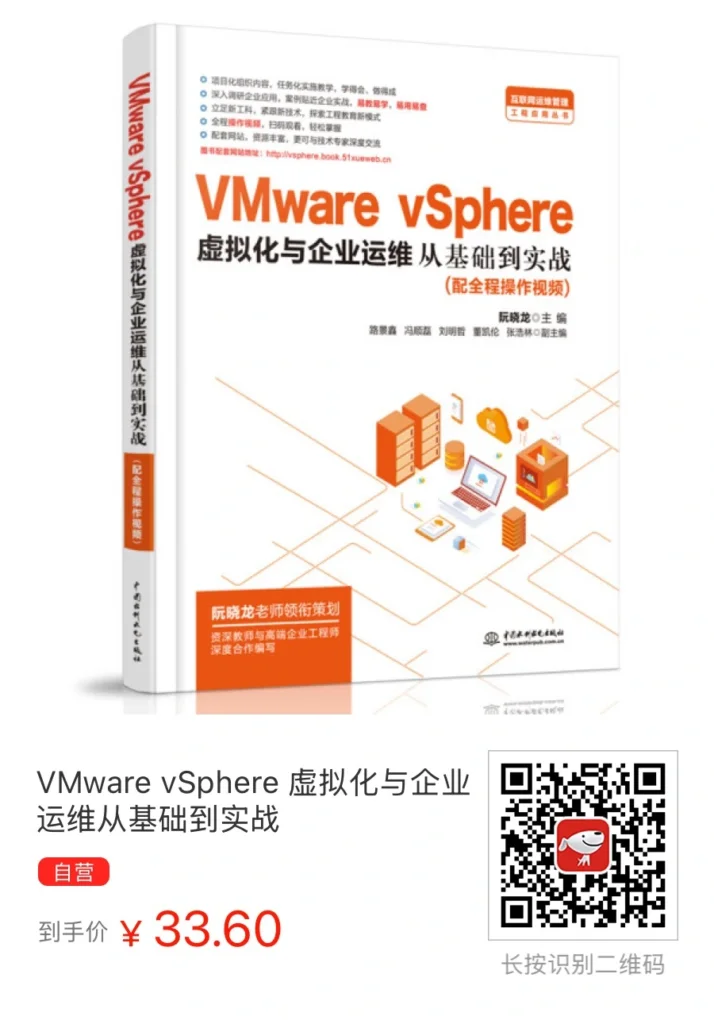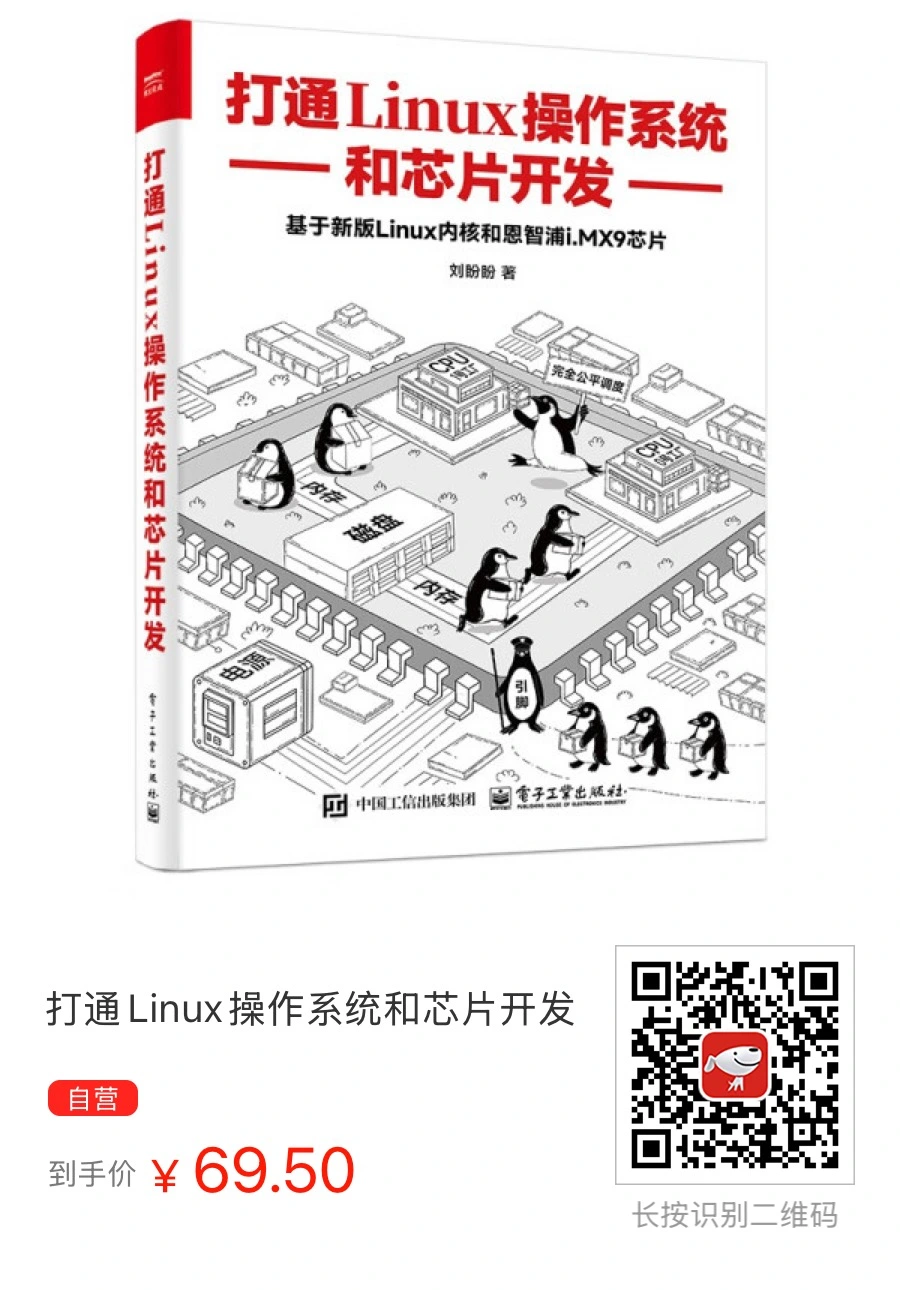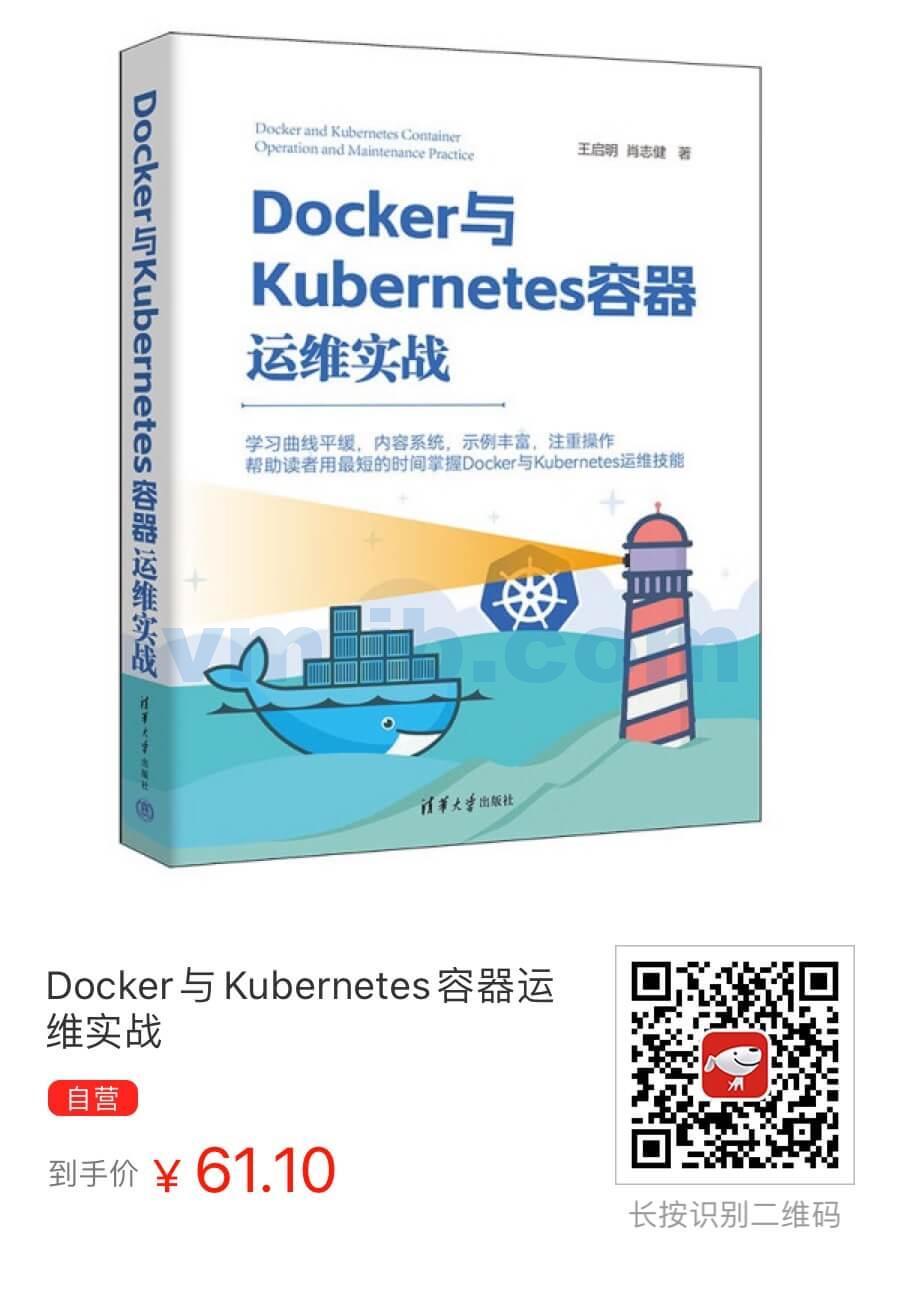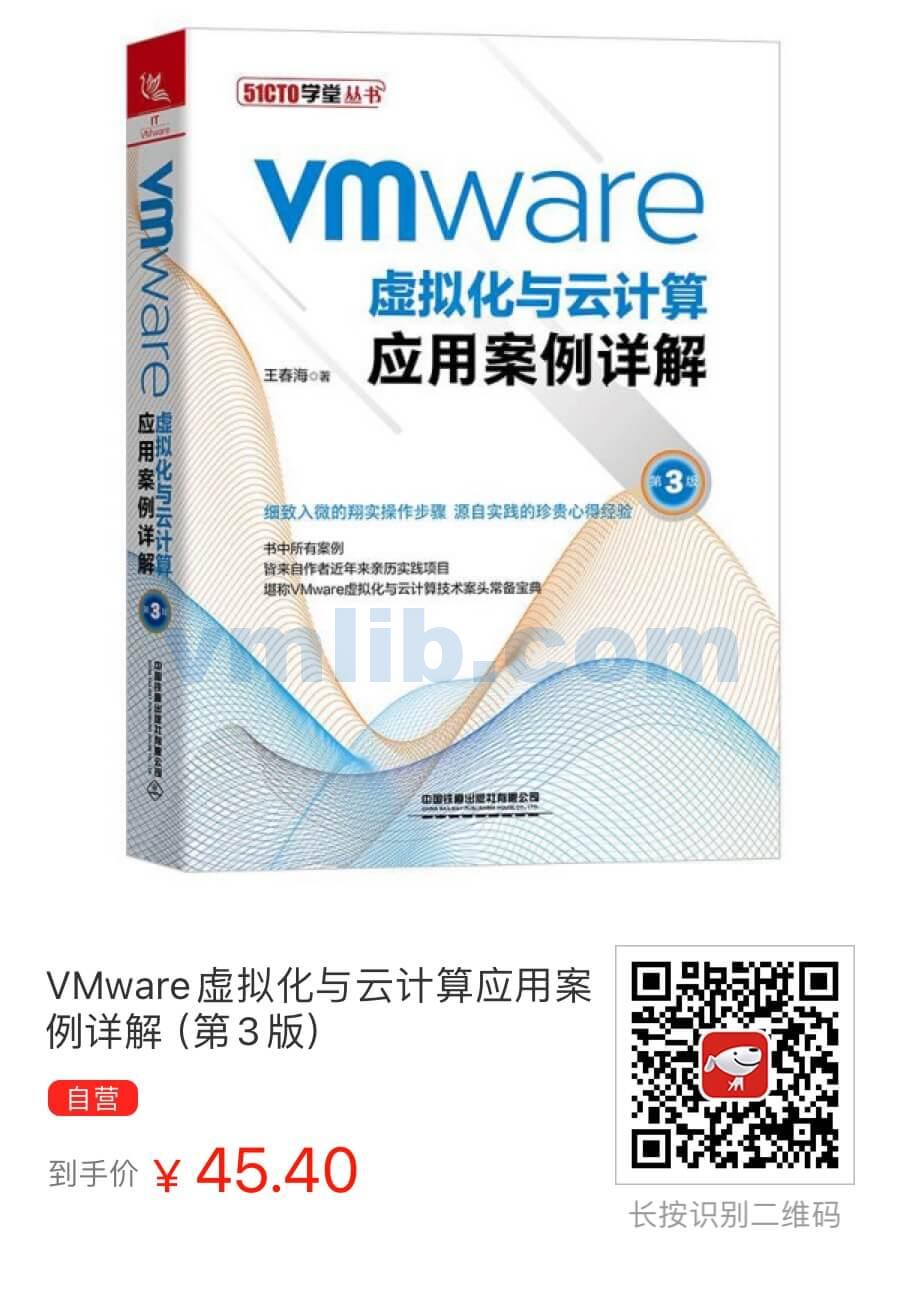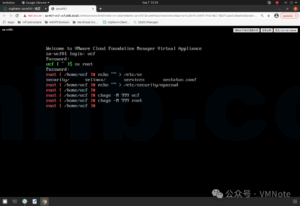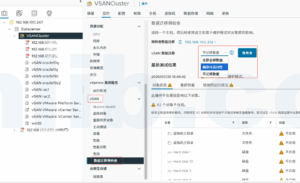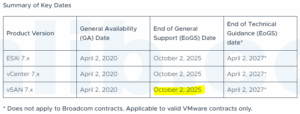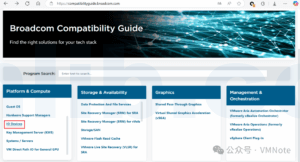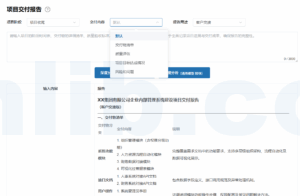To study for VMware HCI Master Specialist Exam | vSAN认证考试题目学习
95. An administrator is reviewing the root cause analysis of a failure event that resulted in vSAN Data Loss. The following information is known about the event:
- 1.The RAID battery-replacing procedure on one of the first vSAN cluster node took much more time than the vSAN administrator predicted.
- 2.The only Storage policy has a Primary level of Failures To Tolerate=1.
- 3.Whilst the first host was in maintenance mode, another node failure occurred, causing data loss in the vSAN cluster.
The administrator needs to update the procedure for completing maintenance on the cluster.
Which Maintenance Mode option should the administrator choose to ensure that data loss does not occur in the future?
- A.No data migration
- B.Ensure accessibility
- C.No data migration with selected option ‘Move powered-off and suspended virtual machines to other hosts in the cluster’
- D.Full data migration
Explaination:
In a VMware vSAN environment, when performing maintenance activities that require a host to enter maintenance mode, it’s crucial to select the right maintenance mode option to prevent data loss, especially in scenarios where the cluster’s fault tolerance is challenged. Given the situation where a RAID battery replacement took longer than expected and a subsequent node failure occurred during maintenance, leading to data loss, it’s evident that the cluster’s resilience needs to be improved during such operations.
Here are the options and the best choice based on the provided scenario:
- A. No data migration: This option does not migrate any data from the host entering maintenance mode. It’s the quickest option but the riskiest, especially in a cluster with a Primary level of Failures to Tolerate (FTT) = 1. If another host fails or experiences issues while the first host is in maintenance mode, data loss can occur because there’s no redundancy for the data that was only on the host that is in maintenance.
- B. Ensure accessibility: This option ensures that all data remains accessible even if a host is in maintenance mode, by migrating enough data to other hosts in the cluster so that all virtual machine objects meet their storage policy requirements. However, it may not provide full redundancy if another failure occurs, depending on the specific circumstances and the storage policy in place.
- C. No data migration with selected option ‘Move powered-off and suspended virtual machines to other hosts in the cluster’: This option focuses on moving VMs that are not currently running but does not address the migration of data for running VMs. It’s a variation of option A with a slight enhancement for non-active VMs but still carries significant risk for data loss in scenarios like the one described.
- D. Full data migration: This option migrates all data from the host entering maintenance mode to other hosts in the cluster. It ensures that all data is fully protected according to the vSAN storage policy settings, even if another host fails during the maintenance window. This is the safest option to prevent data loss but also the most time-consuming.
Given the scenario where a RAID battery replacement unexpectedly extended the maintenance window and was compounded by an additional node failure, leading to data loss, the best option to prevent such an event in the future is:
- D. Full data migration
Choosing Full data migration ensures that all data is fully replicated across the remaining active nodes in the cluster, maintaining adherence to the storage policy’s primary level of Failures to Tolerate (FTT) settings. This approach provides the highest level of protection against data loss during maintenance activities, especially in environments where unexpected delays or additional failures might occur.
- 一名管理员正在审查导致vSAN数据丢失的故障事件的根本原因分析。以下是关于该事件的已知信息:
- 在首个vSAN集群节点之一上进行的RAID电池更换程序所花费的时间远远超过了vSAN管理员的预期。
- 唯一的存储策略设置的主要级别的容错能力为1。
- 当第一个主机处于维护模式时,另一个节点发生了故障,导致vSAN集群数据丢失。
管理员需要更新完成集群维护的程序。
为了确保未来不会发生数据丢失,管理员应该选择哪个维护模式选项?
A. 无数据迁移
B. 确保可访问性
C. 无数据迁移,并选择“将关闭和挂起的虚拟机移至集群中的其他主机”
D. 全数据迁移
解释:
在VMware vSAN环境中,执行需要主机进入维护模式的维护活动时,选择正确的维护模式选项以防止数据丢失至关重要,特别是在挑战集群的容错能力的情况下。鉴于RAID电池替换耗时超出预期,并且在维护期间发生了随后的节点故障,导致数据丢失,显然需要在此类操作期间提高集群的韧性。
这里是选项和基于提供的情景的最佳选择:
A. 无数据迁移:此选项不会迁移进入维护模式的主机上的任何数据。这是最快的选项,但也是最危险的,特别是在主要容错级别(FTT)= 1的集群中。如果在第一个主机处于维护模式时,另一个主机失败或遇到问题,数据丢失可能发生,因为在维护中的主机上的数据没有冗余。
B. 确保可访问性:此选项通过迁移足够的数据到集群中的其他主机,确保即使主机处于维护模式时,所有数据仍然可访问,以满足所有虚拟机对象的存储策略要求。然而,如果发生另一次故障,根据具体情况和所实施的存储策略,它可能不提供完全的冗余。
C. 无数据迁移,并选择“将关闭和挂起的虚拟机移至集群中的其他主机”:此选项专注于移动当前未运行的VM,但没有解决运行中VM的数据迁移问题。这是选项A的一个变种,对非活动VM有轻微的增强,但在描述的情况下仍然存在数据丢失的重大风险。
D. 全数据迁移:此选项将进入维护模式的主机上的所有数据迁移到集群中的其他主机。它确保所有数据根据vSAN存储策略设置得到完全保护,即使在维护窗口期间另一个主机失败。这是防止数据丢失的最安全选项,但也是最耗时的。
鉴于RAID电池更换意外延长了维护窗口并且伴随着额外的节点故障导致数据丢失的情景,防止未来此类事件的最佳选项是:
D. 全数据迁移
选择全数据迁移确保所有数据完全复制到集群中剩余活跃节点,维持遵守存储策略的主要容错级别(FTT)设置。这种方法在维护活动期间提供了最高级别的数据丢失保护,特别是在可能发生意外延迟或额外故障的环境中。
- 一名管理员正在审查导致vSAN数据丢失的故障事件的根本原因分析。以下是关于该事件的已知信息:
- 在首个vSAN集群节点之一上进行的RAID电池更换程序所花费的时间远远超过了vSAN管理员的预期。
- 唯一的存储策略设置的主要级别的容错能力为1。
- 当第一个主机处于维护模式时,另一个节点发生了故障,导致vSAN集群数据丢失。
管理员需要更新完成集群维护的程序。
为了确保未来不会发生数据丢失,管理员应该选择哪个维护模式选项?
- A. 无数据迁移
- B. 确保可访问性
- C. 无数据迁移,并选择“将关闭和挂起的虚拟机移至集群中的其他主机”
- D. 全数据迁移
解释:
在VMware vSAN环境中,执行需要主机进入维护模式的维护活动时,选择正确的维护模式选项以防止数据丢失至关重要,特别是在挑战集群的容错能力的情况下。鉴于RAID电池替换耗时超出预期,并且在维护期间发生了随后的节点故障,导致数据丢失,显然需要在此类操作期间提高集群的韧性。
这里是选项和基于提供的情景的最佳选择:
A. 无数据迁移:此选项不会迁移进入维护模式的主机上的任何数据。这是最快的选项,但也是最危险的,特别是在主要容错级别(FTT)= 1的集群中。如果在第一个主机处于维护模式时,另一个主机失败或遇到问题,数据丢失可能发生,因为在维护中的主机上的数据没有冗余。
B. 确保可访问性:此选项通过迁移足够的数据到集群中的其他主机,确保即使主机处于维护模式时,所有数据仍然可访问,以满足所有虚拟机对象的存储策略要求。然而,如果发生另一次故障,根据具体情况和所实施的存储策略,它可能不提供完全的冗余。
C. 无数据迁移,并选择“将关闭和挂起的虚拟机移至集群中的其他主机”:此选项专注于移动当前未运行的VM,但没有解决运行中VM的数据迁移问题。这是选项A的一个变种,对非活动VM有轻微的增强,但在描述的情况下仍然存在数据丢失的重大风险。
D. 全数据迁移:此选项将进入维护模式的主机上的所有数据迁移到集群中的其他主机。它确保所有数据根据vSAN存储策略设置得到完全保护,即使在维护窗口期间另一个主机失败。这是防止数据丢失的最安全选项,但也是最耗时的。
鉴于RAID电池更换意外延长了维护窗口并且伴随着额外的节点故障导致数据丢失的情景,防止未来此类事件的最佳选项是:
D. 全数据迁移
选择全数据迁移确保所有数据完全复制到集群中剩余活跃节点,维持遵守存储策略的主要容错级别(FTT)设置。这种方法在维护活动期间提供了最高级别的数据丢失保护,特别是在可能发生意外延迟或额外故障的环境中。






 VM技术助理
VM技术助理
